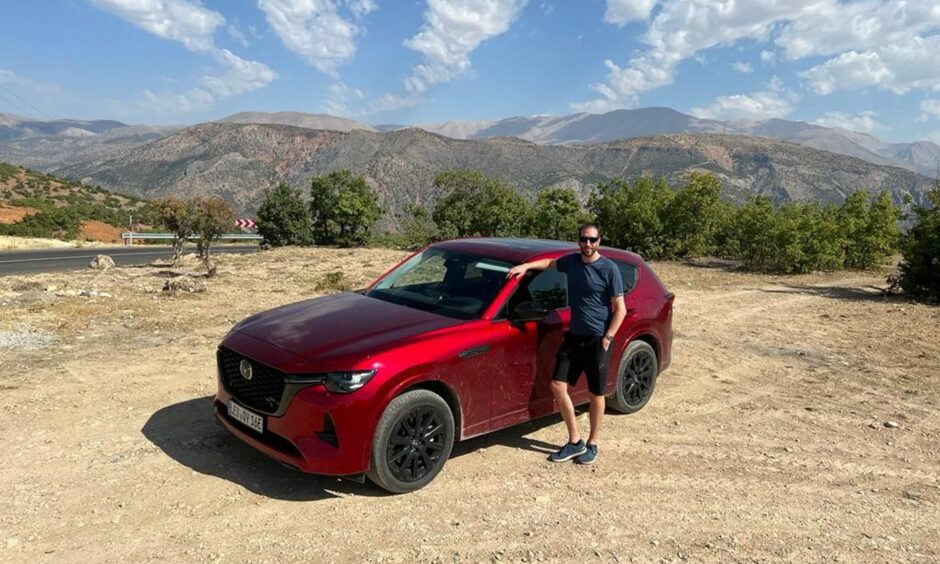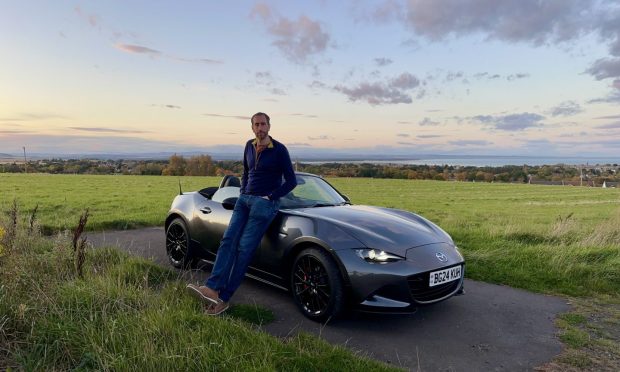The tyres of my Mazda are just inches from the edge. Below me the switchback path snakes thousands of feet down the mountainside, its gravel surface pockmarked with holes.
Above, the path clings to the mountainside, disappearing into the clouds that shroud some of Turkey’s highest peaks.
There’s no barrier between me and the drop. If I make a mistake I’ll have a long time to think about it before I hit the valley floor.
I’m on the D-915 in Turkey, one of the most dangerous roads in the world.
The 66-mile long road has 29 hairpin bends with no railings between it and the dizzying drop. Closed for six months of the year due to treacherous weather, it has taken numerous lives in recent years. The website Dangerous Roads says of it: “only the suicidal, the insane, or the paid-to-do-this should ever drive down.”
It’s one of two high-risk routes that we’ll be tackling as part of Mazda’s Turkish Epic Drive.
Each year Mazda takes groups of journalists on their Epic Drive events. With the goal of renewing the link between the love of driving and the love of adventure, their only criteria are that each trip must contain wilderness, a different culture and an element of danger.
Starting out
Our journey began in Trabzon, a small city on the Black Sea. It’s a very long way from the tourist hotspots of Istanbul and Antalya. In fact, we were the only western people to have stayed at our hotel this year.
Setting off from the coast early on an overcast morning we slowly made our way through endless tea plantations – Turkey boasts the highest tea consumption in the world.
Leaving tarmac we drove on a thin gravel trail through mountain villages. Eventually we stopped at the last teahouse for a brew to gird ourselves before the ordeal ahead. Sipping on the refreshing tea, we could see a rickety bridge and our route hugging the mountainside as it rose into the heavens.
Tackling it was slow and intense work. Driven with care the risk is low. It’s a bit like walking along the top of a narrow bench – easy when it’s on the ground but very different if it’s lifted 100 feet in the air.
Eventually we reached the summit of the Pontic Mountains. Cold and shrouded in swirling cloud, it’s an otherworldly place. Dropping down the far side we were greeted by blue skies, a hot sun and a succession of villages that make a living farming these remote mountainsides.
Stone Road
Day two saw us tackle the second of our perilous routes. The Stone Road of Kemaliye may be only eight kilometres long but it took an astonishing 132 years to build.
Carved – largely by hand – out of solid rock, the route clings to a cliff edge high above the Euphrates. Started in 1870 by Kemaliye locals to connect their remote villages to central Anatolia, it was finally completed in 2002.
Driving this testament to stubborn tenacity is an experience I’ll remember forever. Rock faces tower on one side while on the other a cliff drops down into the chalky, turquoise waters of the Euphrates.
At one point stone towers loom on both side, leaning inwards and leaving a gap of just two metres for us to squeeze our Mazda CX-60 between.
No fewer than 38 tunnels punch through almost five kilometres of rock. A memorial bears the long list of people killed in the construction of what must be one of the most ambitious road projects on Earth.
Finally we emerged from the last tunnel and turned away from the majestic gorge created by one of the world’s most iconic rivers.
Journey’s end
We still had 100s of kilometres to go. These took us through some of Turkey’s most remote and splendid scenery – high plains ringed with mountains, sweeping roads running alongside raging rivers, and huge tranquil lakes.
Our steeds over the two days were Mazda’s largest SUVs. On sale for 10 years and two generations, the CX-5 is a hugely capable family SUV that has rightly sold in enormous numbers. Meanwhile, the CX-60 is a luxury hybrid SUV that was only launched this summer.
Both are perfectly suited to the terrain we’ve tackled. Four-wheel drive makes them surefooted on the narrow dusty trails, while their excellent refinement meant 600km days didn’t leave us saddle-sore.
Eventually we reached the town of Urgup in the UNESCO World Heritage Site of Cappadocia – famous for its amazing rock formations. Here we stayed in an incredible cave hotel, enjoying good food and a well-earned libation after our epic 1,200km journey.
The next day it was time to begin making my way back to Scotland. I left with a deeper understanding of Turkey, with my driving limits having been tested…and with a thirst to do another of Mazda’s epic drives.
























Conversation